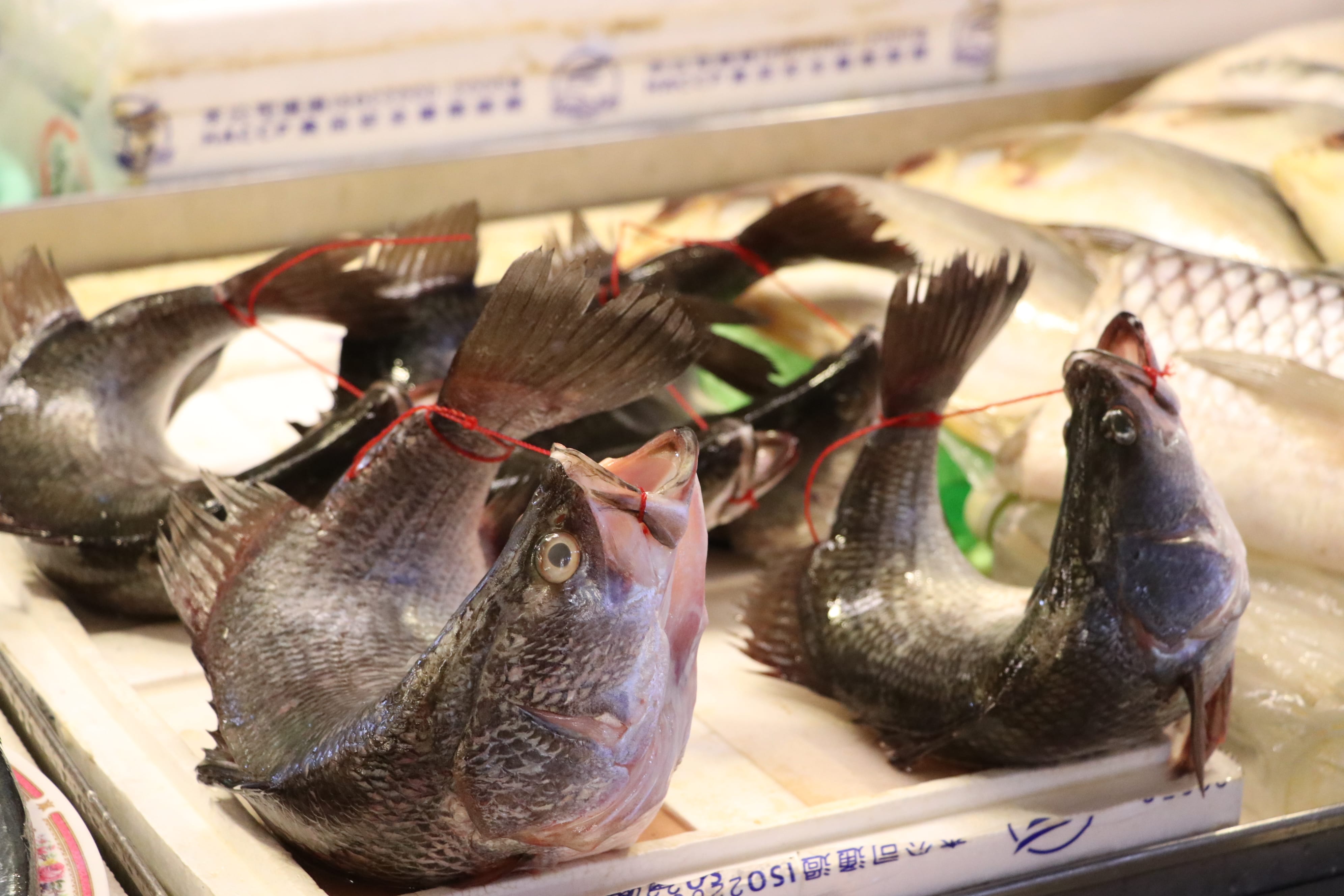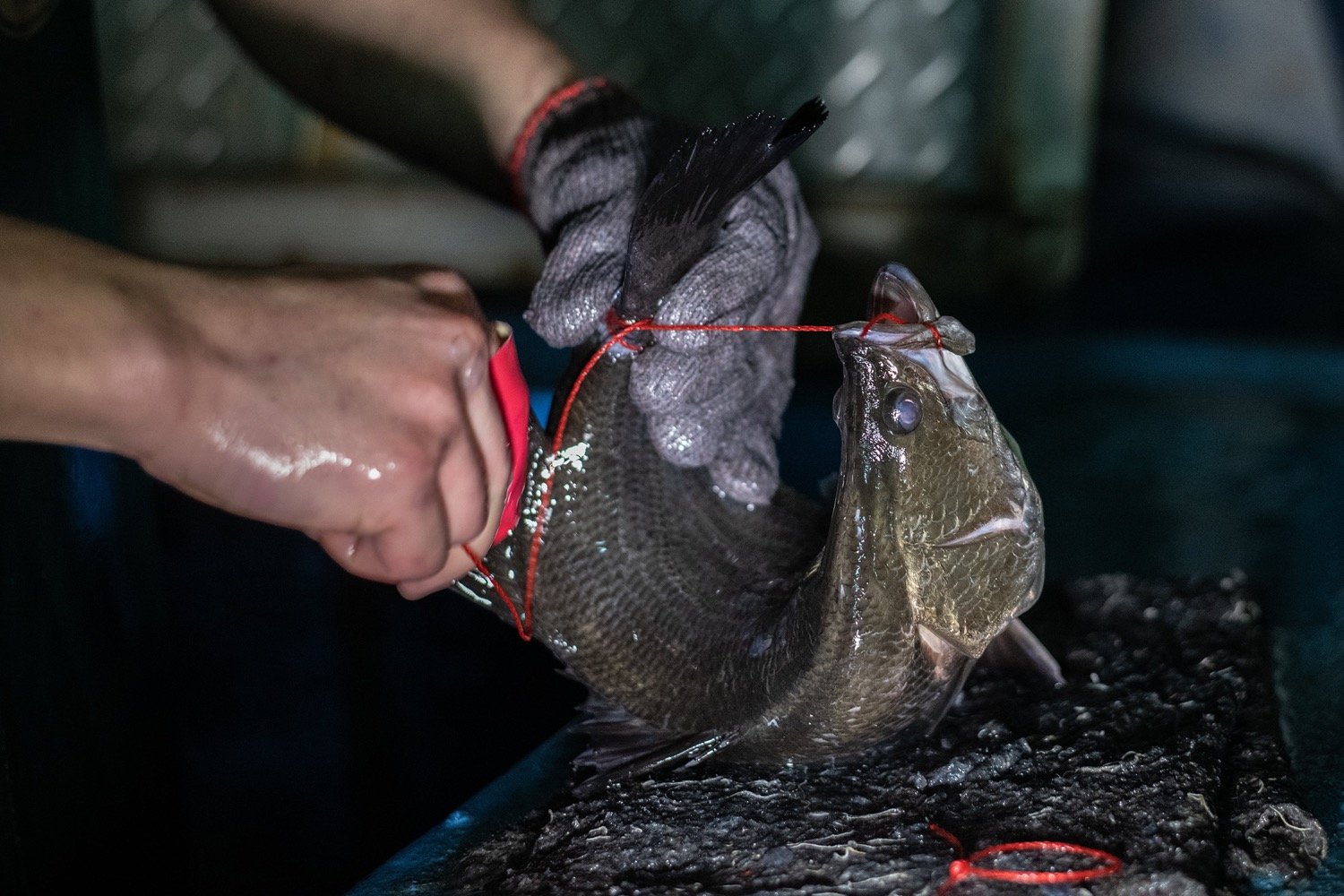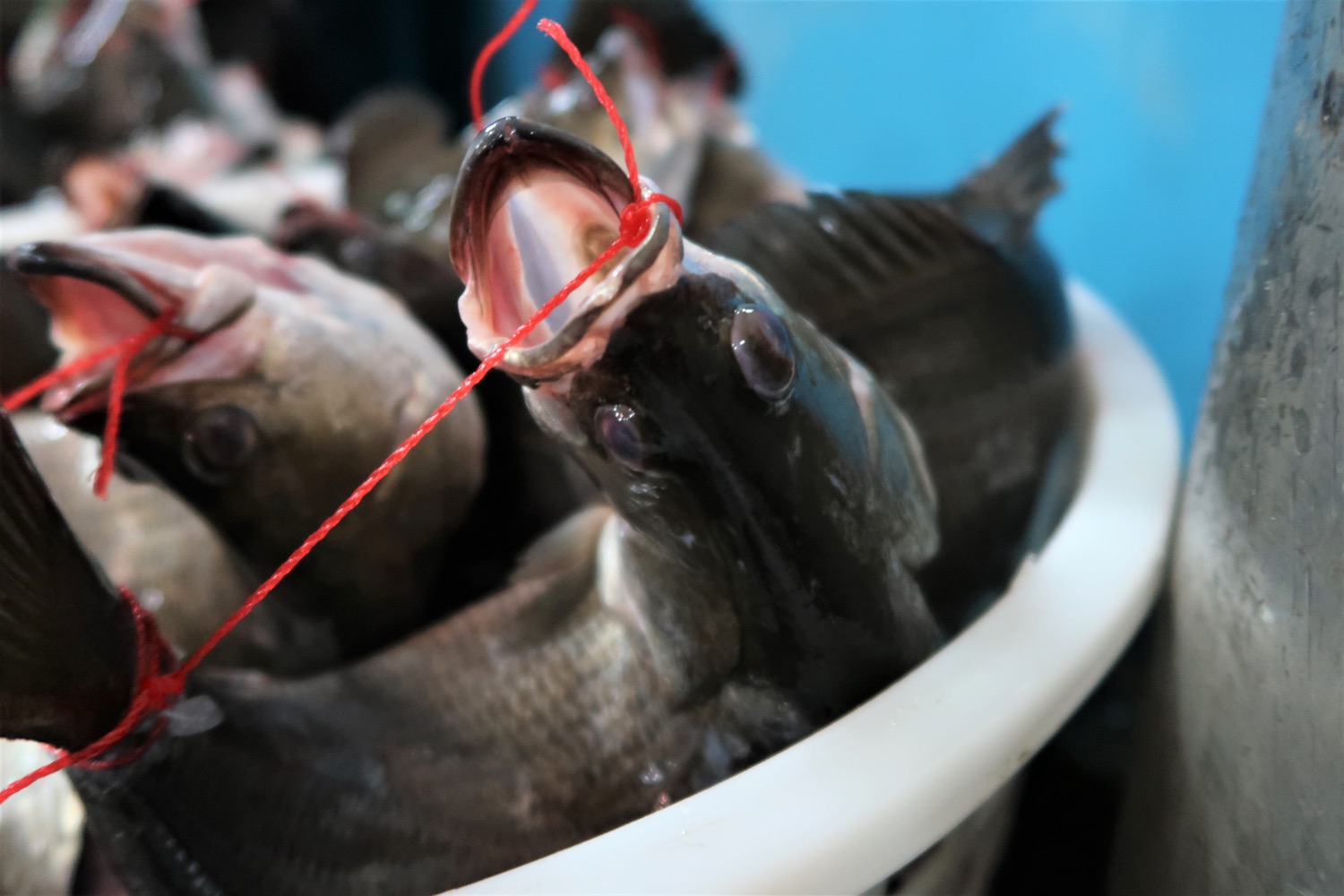Bound for the history books: EAST calls for end to cruel fish binding practice
Please turn on the English Subtitles
If you visit a traditional Taiwanese wet market you may see vendors selling so-called ‘bow fish’. The term refers to Giant Sea Perch bent into the shape of a ‘U’, bound by a nylon thread pulled tightly from their mouths to their tails.
Fish binding aims to keep fish alive longer out of water, with the purported aim of preserving freshness. However, by forcing the gills open and increasing their exposure to oxygen, this outdated practice causes fish to slowly suffocate to death while painfully contorted, causing acute, prolonged suffering.
The Environment & Animal Society of Taiwan (EAST) today held a press conference urging consumers not to support this cruel practice. Deputy Chief Executive Yu-Min Chen emphasized that “Fish are vertebrates and react to suffering and distress in much the same way as terrestrial vertebrates. The capacity of fish to feel pain and experience suffering resulting from fear and distress has long been confirmed by scientific research.”
Fish are covered by the Animal Protection Act in Taiwan, however the welfare of fish has long been overlooked, leading to untold numbers of fish enduring inhumane treatment. Ms. Chen stressed that “In the end, all mistreatment of animals used for food will affect food safety and human health.”
EAST urges consumers to reject fish that have been cruelly bound, and calls on the Council of Agriculture (COA) to uphold Taiwan’s laws and immediately put a stop to the cruel practice of fish binding. Further, the government should establish animal welfare standards covering all life stages of fish raised for human consumption, conduct professional industry training, and promote increased awareness of fish welfare among consumers.

Healthy meat does not come from fish that have been bound and suffocated
Footage from EAST’s investigation shows that many consumers mistakenly believe that live fish represent superior quality and freshness. As a result, fish vendors expend additional transportation costs, time, and human resources to accommodate this persistent—but unfounded—belief, causing the unbearable suffering of more than three million giant sea perch per year of approximately 10 million giant sea perch sold in Taiwan, according to our estimates.
Bound fish must endure the pain inflicted by their unnatural position while simultaneously struggling for air. This unnecessary suffering may continue for up to 8-12 hours until the fish finally die of suffocation or are unbound and slaughtered for sale.

Fish expert Dr. Tony Wall, founder of the Scottish Fish Veterinary Group (FVG), warned “The position that these fish are in and the fact that they can remain alive for long periods of time means that as they struggle there is going to be an increase in the levels of lactic acid. This is going to cause flesh contamination and a decrease in flesh quality, so the actual quality of the meat of the fish will not be as good by using this practice.”
Addressing the suffering experienced by bound fish, Dr. Wall stated “This is going to be extremely painful for fish which are never naturally in this position. The gills are forced open, so suffocation is very slow, but it actually will cause a very slow reduction in the oxygen levels, which is going to lead to fear… The actual binding process of passing the strings through the mouth and gills, the operculum, again will cause pain and distress.”
“Finally, if these fish are sprinkled over with water to try and keep them alive, there is the potential for contamination and bacterial contamination as well. So, finally and in conclusion, I would say that this practice is cruel, it is painful, it causes a decrease in flesh quality, and it has got the potential to cause bacterial contamination.”
Scientific research also indicates that fish experience distress at all stages of the slaughter process. Distress during slaughter can cause a reduction in nutritional value and hasten the speed that fish meat goes off. It can also give fish meat a bitter flavor, and produce metabolites that result in an unpleasant odor.

Eight of Taiwan’s 24 fish markets still engage in this practice
According to official statistics, the aquaculture industry in Taiwan rears four species of perch. In 2018, giant sea perch (the species used in fish binding) accounted for 68% of all perch traded in fish markets in Taiwan. Japanese sea perch, black bass, and striped bass account for 16%, 10%, and 6% respectively. Interviews conducted by EAST encompassing all 24 fish markets in Taiwan show that 17 of Taiwan’s 24 fish markets sell giant sea perch (see breakdown below).
|
Types of Fish Sold |
Market(s) |
No. of Markets |
|
Sells both live and chilled fish (Some live fish bound) |
Taipei, Sanchong, Taichung, Chiayi, Xingda Port, Jiali, Kaohsiung, Zihguan |
8 |
|
Only sells chilled fish; no live fish |
Hsinchu, Miaoli, Dounan |
3 |
|
No sale of farmed fish |
Toucheng |
1 |
|
Both chilled and live fish; unclear if fish bound |
Tainan, Sinying, Gangshan |
3 |
|
No response to enquiries |
Taoyuan, Changhua |
2 |
Three fish markets stated that they only sell chilled giant sea perch, and do not sell any live fish. Consumer acceptance of these markets shows that fish binding is merely the preference of a minority of vendors and wholesalers. Many vendors interviewed by EAST echoed the sentiments of this fishmonger, who explained “Customers think that only live fish are fresh. When I tell them ‘Imagine what needs to be added [to the water] for fish to survive a whole day of arduous transport from southern Taiwan!’, they quickly understand.” Another added “Many consumers think that bound fish are alive, but those fish are long dead. Some vendors even bind fish after they die, to make customers think that they are still alive.”

The government must put a stop to this flagrant violation of the Animal Protection Act
Fish are vertebrate animals and warrant protection under Taiwan’s Animal Protection Act. The practice of binding live fish is completely unnecessary and violates Article 6 of the Act, which stipulates that “One must not harass, abuse or injure any animal.” However the competent authority, the Council of Agriculture (COA), has long maintained a staggering indifference towards the mistreatment of fish.
The COA has consistently failed to ensure that its inspectors enforce the Animal Protection Act, and intervene to stop to the practice of fish binding, and is yet to devise fish animal welfare standards for industry covering the rearing, catching, transport, display, sale, and slaughter of fish. It is EAST’s view that allowing fish binding to continue in direct contravention of the Animal Protection Act is a severe dereliction of duty.
Taiwan risks becoming a global laggard on fish welfare
All human disturbance—including fishing and transportation—triggers some degree of distress in fish. Severe distress will affect fishes’ endocrine, metabolic, and immune systems. This makes reducing the injury and stress experienced by fish once they leave the water of utmost importance to both food safety and animal welfare. Scientific research has found that the time from asphyxiation to death once a fish is removed from the water varies depending on the resistance to hypoxia of each respective species. During this time, fish will experience acute and prolonged suffering.
As for chickens, ducks, pigs, cows, and other animals used for food, fish should be stunned prior to slaughter. Internationally-accepted methods of fish slaughter include mechanical percussive stunning, electrical stunning, and semi-dry electrical stunning, to name a few. Fish should be slaughtered immediately after receiving a percussive blow or electrical stunning. Other methods including spiking/coring or shooting, which also cause fish to lose consciousness quickly when executed correctly, also comply with standards set by the World Organisation of Animal Health (OIE).
However, the following methods of slaughter have been found to induce distress in fish and have detrimental effects on fish welfare, and therefore fail to comply with OIE requirements.
-
Chilling with ice in holding water
-
Carbon dioxide in holding water
-
Chilling with ice and CO2 in holding water
-
Salt or ammonia baths
-
Asphyxiation by removal from water
-
Exsanguination without stunning
Since 2008, OIE has published three chapters pertaining to fish welfare in the Aquatic Animal Health Code, acting as a basis for animal welfare policy and legislation in member countries. The three chapters are ‘Welfare of farmed fish during transport’, ‘Welfare aspects of stunning and killing of farmed fish for human consumption’, and ‘Killing of farmed fish for disease control purposes.’
In addition to the OIE’s guidelines, New Zealand’s Animal Welfare (Commercial Slaughter) Code of Welfare 2010 also features regulations for the appropriate slaughter of aquatic species, including specific standards for finfish (including eels). The first section stipulates that “Fish pumps, brailing equipment, nets and other fish handling equipment must be designed, maintained and used in a manner that minimises harm to the live finfish.”
Leading countries and global institutions such as the OIE are making major strides to reduce the suffering of fish used for human consumption, and are setting guidelines to protect the welfare of fish. As a member of the OIE, the Council of Agriculture must act swiftly establish comprehensive standards for fish welfare and lead Taiwan’s aquaculture industry forward, to prevent Taiwan from becoming a global laggard in this important emerging area.
Media contact
Yu-Min Chen, Deputy Chief Executive
Environment & Animal Society of Taiwan (EAST)
Mobile: +886 (9) 1015 0908
Phone: +886 (2) 2236 9735










